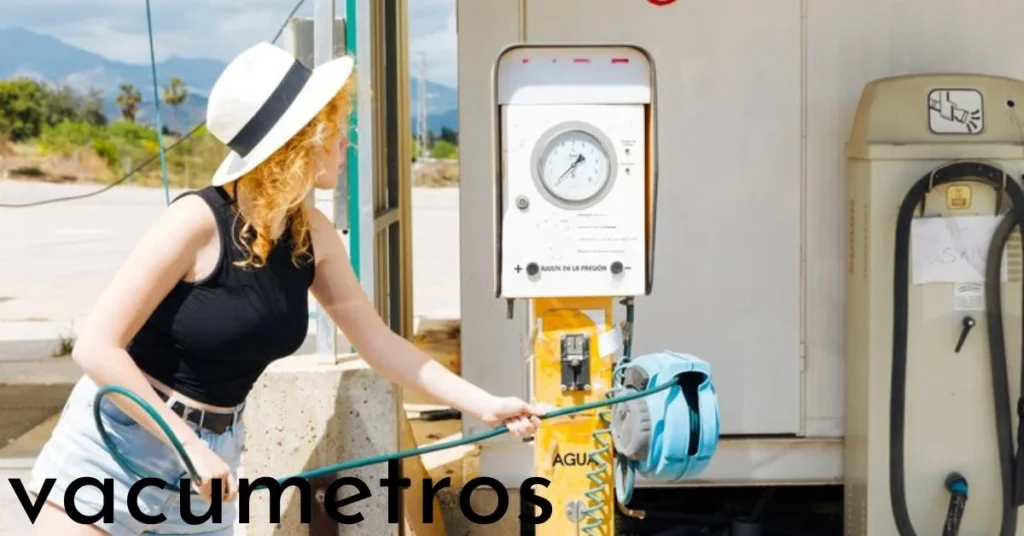Vacumetros, also known as vacuum gauges, play a crucial role in numerous industries by measuring the pressure in a vacuum. These devices are essential for ensuring the efficiency and safety of various processes. In this article, we’ll delve into the importance of vacumetros, their working principles, and their diverse applications across different fields.
What is a Vacumetro?
A vacumetro, or vacuum gauge, is an instrument used to measure the pressure within a vacuum. The concept of vacuum measurement has evolved significantly over the years, with early developments dating back to the 17th century. Modern vacumetros come in various types, each designed for specific applications and precision levels.
How Vacumetros Work
Vacumetros operate on the principle of measuring the force exerted by gas molecules within a vacuum. The basic types include mechanical, electronic, and digital vacumetros, each with unique mechanisms for pressure detection and display.
Types of Vacumetros
Mechanical Vacumetros
These vacumetros use physical components like springs and diaphragms to measure pressure. They are often robust and reliable for many industrial applications.
Electronic Vacumetros
Utilizing electronic sensors, these vacumetros provide more precise readings and are suitable for environments where accuracy is paramount.
Digital Vacumetros
Digital vacumetros offer real-time data display and often come with features like data logging and remote monitoring, making them ideal for modern, tech-driven industries.
Applications in Different Industries
Vacumetros are indispensable in various sectors, from automotive to medical fields, each benefitting uniquely from these devices.
Automotive Industry Applications
In the automotive sector, vacumetros are used for:
Engine Diagnostics
By measuring the vacuum pressure within engines, vacumetros help diagnose potential issues, ensuring optimal performance.
Fuel Efficiency
Vacumetros assist in tuning engines for better fuel efficiency, contributing to cost savings and environmental benefits.
Emission Control
Monitoring vacuum pressure is crucial for controlling emissions, helping vehicles comply with environmental regulations.
Manufacturing Industry Applications
In manufacturing, vacumetros enhance:
Quality Control
Ensuring products meet stringent quality standards by monitoring vacuum processes.
Process Optimization
Optimizing manufacturing processes by providing accurate pressure readings, leading to increased efficiency.
Equipment Maintenance
Predictive maintenance based on vacuum pressure data helps prevent equipment failures and downtime.
Medical Field Applications
In healthcare, vacumetros are vital for:
Vacuum-Assisted Surgeries
Providing precise control in surgeries that require a vacuum environment.
Respiratory Therapy
Ensuring the correct pressure settings in respiratory equipment, crucial for patient care.
Laboratory Applications
Supporting various laboratory processes that require accurate vacuum conditions.
Environmental Monitoring Applications
Vacumetro’s play a significant role in:
Air Quality Monitoring
Measuring vacuum pressure in air quality monitoring devices helps ensure environmental safety.
Research and Development
Facilitating advanced research by providing reliable vacuum measurements.
Industrial Hygiene
Ensuring safe working conditions by monitoring vacuum levels in industrial environments.
Benefits of Using Vacumetros
The advantages of vacumetro’s include:
Enhanced Accuracy
Providing precise measurements crucial for various applications.
Cost Efficiency
Reducing costs through improved process control and maintenance.
Versatility
Suitable for a wide range of industries and applications.
Choosing the Right Vacumetro
When selecting a vacumetro, consider:
Factors to Consider
- Accuracy requirements
- Environmental conditions
- Type of application
Best Practices
- Regular calibration
- Proper installation and maintenance
Installation and Maintenance Tips
Proper Installation Procedures
Follow manufacturer guidelines to ensure accurate readings and device longevity.
Routine Maintenance
Regular checks and calibration to maintain optimal performance.
Innovations in Vacumetro Technology
Recent advancements include:
Recent Advancements
- Improved sensor technology
- Integration with IoT for remote monitoring
Future Trends
- Enhanced digital interfaces
- Greater accuracy and durability
Common Challenges and Solutions
Troubleshooting Tips
- Check for leaks
- Ensure proper calibration
Addressing Common Issues
- Regular maintenance to prevent malfunctions
- Using high-quality components
Conclusion
Vacumetro’s are essential tools that enhance efficiency and accuracy in various applications. From automotive diagnostics to medical procedures, their versatility and precision make them invaluable. As technology advances, vacumetro’s will continue to evolve, offering even greater benefits in the future.
FAQs
What is the primary function of a vacumetro?
A vacumetro measures the pressure within a vacuum, crucial for various industrial and scientific applications.
How often should a vacumetro be calibrated?
Typically, a vacumetro should be calibrated annually, but this can vary based on usage and manufacturer recommendations.
Can vacumetros be used in harsh environments?
Yes, many vacumetro’s are designed to withstand harsh conditions, but it’s essential to choose the right type for specific environments.
What are the benefits of digital vacumetros over mechanical ones?
Digital vacumetro’s offer real-time data, higher accuracy, and additional features like data logging and remote monitoring.
How do I know if my vacumetro is malfunctioning?
Signs of malfunction include inconsistent readings, inability to calibrate, and visible damage. Regular maintenance can help prevent these issues.







